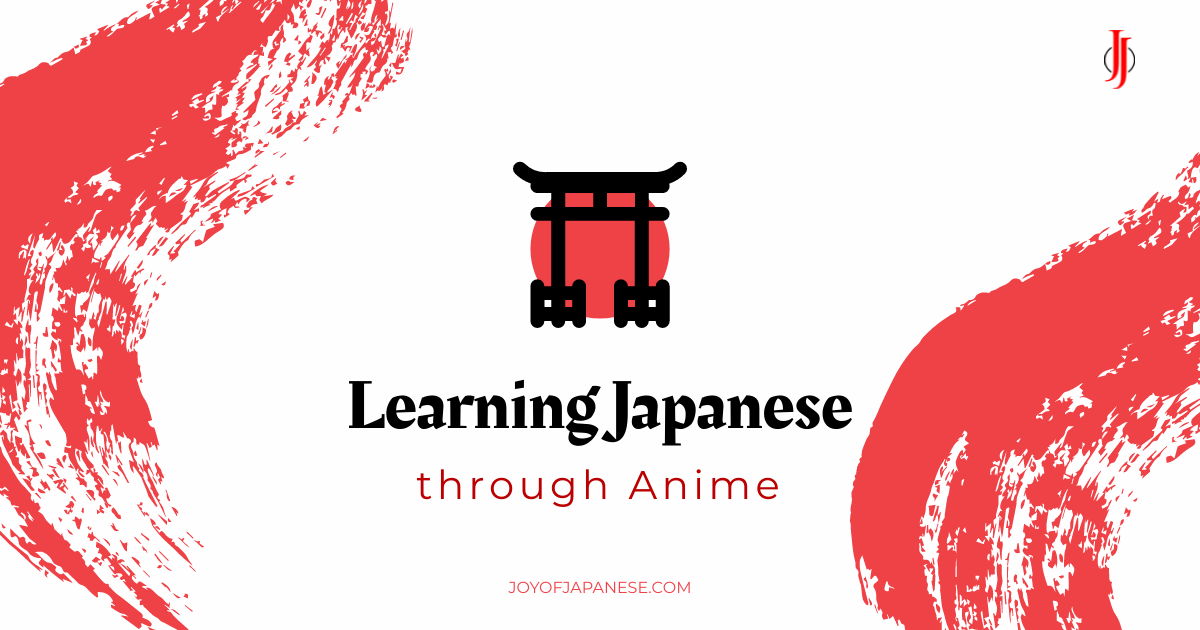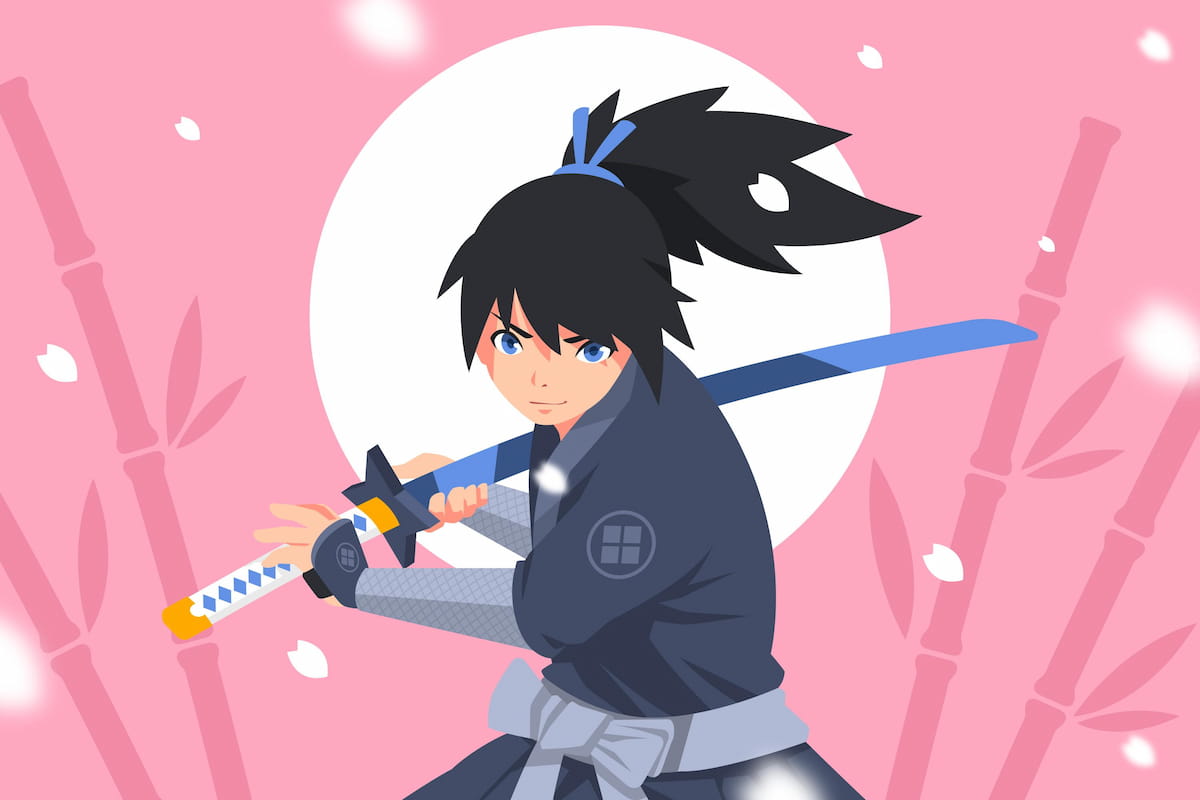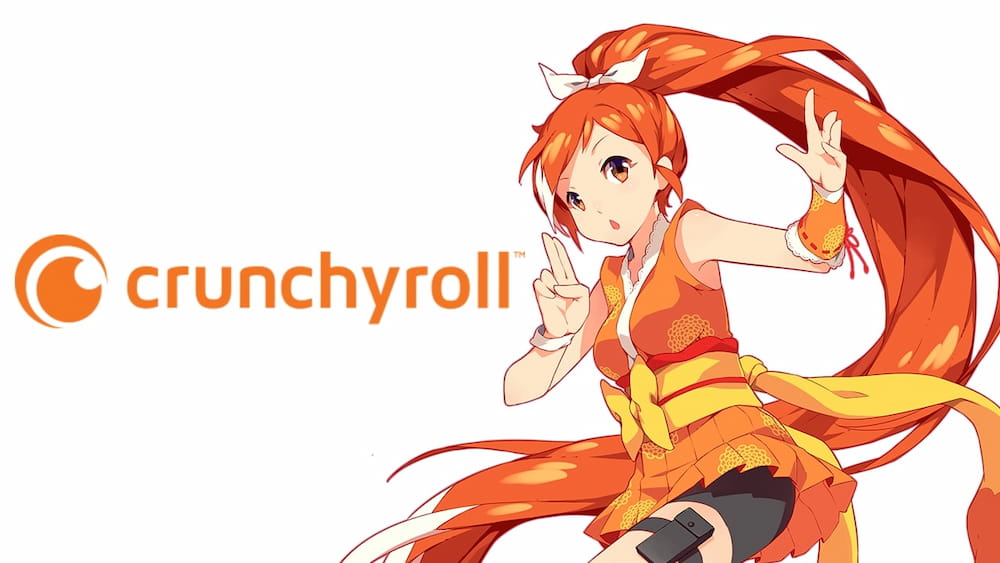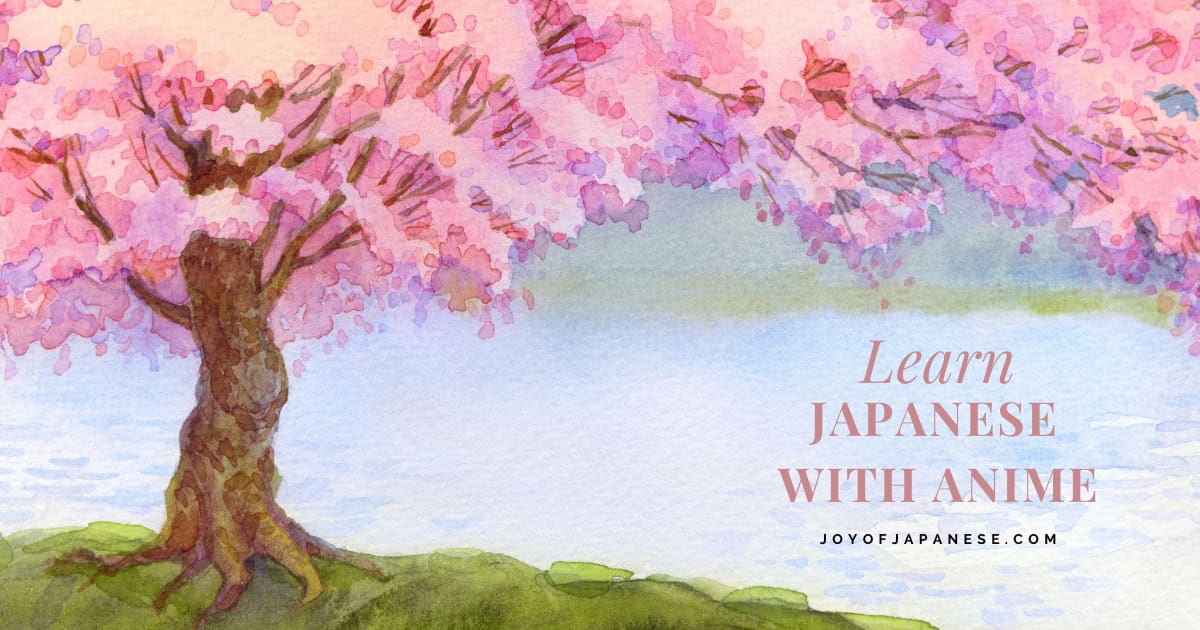Learning Japanese does not need to be boring and hard. With Japanese anime extremely popular worldwide, it is no surprise that many want to study this language to watch their favorite J-anime.
You can benefit like other learners if you love Japanese animation and learning this language. It can make anime more enjoyable, effective, and easy to watch and gain knowledge from it.
But can you really learn Japanese with anime by putting in a little effort? Does it actually help and allow you to improve your language skills?
How does it work, and what are the right approaches and steps involved in this process? What is the top J-anime to help you learn Japanese, and where can you watch it?
Let’s explore everything in this ultimate guide.
TABLE OF CONTENTS
- Pros and cons of watching anime to learn Japanese
- Benefits of learning Japanese through Anime
- Method and How to Learn Japanese with Anime
- Some Anime suggestions
- Where to watch Japanese Animation?
- Final Words: Anime shows and movies to study Japanese
Pros and cons of watching anime to learn Japanese

Learning a new language using textbooks, grammar exercises, and vocabulary lists can become dull over time.
Therefore, finding a strategy to make the learning process pleasant is always an excellent option. This can help you stay motivated when learning your target language.
Anime, colloquially, is a popular term for Japanese animation. It is famous for its engaging storylines, high-level graphics, picturesque scenes, and beautiful soundtracks.
Anime is famous worldwide, and most fans of anime shows are attracted to Japan and its fascinating culture. This gives good reasons to learn Japanese.
Anime still has a controversial reputation as a method of learning Japanese. As a result, studying via anime has often been termed a rookie mistake among language enthusiasts.
A common opinion about learning Japanese from anime is that relying solely on watching anime to learn the language will lead to a dead end.
It is also an established point that the kind of Japanese used in anime differs from the regular Japanese spoken by native speakers.
Well, they are partially accurate. Most anime uses heavily informal and everyday language, and the vocabulary often caters to the specific themes and topics of the shows.
This makes direct learning flawed by studying through it.
This is because the Japanese people speaking in real life are very polite and use formal language and honorifics. Even etiquette, manners, and customs matter.
Japanese is a complex language. So, learning Japanese from anime can be a slippery slope. Still, you can spend hours together trying to study, understand, and memorize the language, banking on the English subtitles.
To some extent, anime can help you improve your Japanese studies.
As a newbie, anime can help you learn some fundamentals. For example, you may pick up words such as yes (Hai), no (Iiae), and I (Watashi). But that is the most you can make out of it if you follow the same pattern.
Anime can, at best, be a supplement or an additional source of learning Japanese. You can combine it with other resources like apps for learning Japanese, books, podcasts, teachers, or any language school.
Despite that, it is a valuable and fun source.
Knowing Japanese only from anime would be fanciful and complex. Yet, there is no basis you can’t use your love of anime to help you learn the language if you’re smart about it and follow the proper steps.
Benefits of learning Japanese through Anime
Like with most languages, listening becomes very important. So, when you “watch” anime, you listen to the dialogue between the characters rather than read it.
It is also that when you watch anime to learn Japanese, you’ll rely heavily on your listening abilities.
The advantage of this is that you will have a lot of exposure to the verbal part of the language. And so your listening and, as an outcome, speaking skills will also enhance quickly.
The features of the Japanese language are extensive. For example, it uses four writing systems — Hiragana, Katakana, Kanji, and Romanji. It also has a very distinct tone and rhythm.
The language is highly repetitive in its use of words, allowing one to hear the same patterns repeatedly. Watching anime would be a great way to discover that nuance.
Most words are indeed anime-specific and sometimes made up. Yet, it could be a good thing, as it can increase your Hiragana, Katakana, and Kanji.
The themes of each anime differ significantly. Thus, anime could be an ideal way to broaden your vocabulary and pick unfamiliar words from various topics. For instance, high school or office romances are great genres to explore daily vocabulary.
The most crucial usefulness is that anime is known for its enjoyment and entertaining stories.
So, supplementing your Japanese education with anime can give you that break from monotonous studies. It makes the entire experience more fulfilling. Since Japanese takes a long time to learn, anime can help you reduce the overall duration.
Another effect of seeing anime is that you can learn many things.
It often gives a lot of detail into the world that they explore. From sports to art, travel to food, comedy to drama, anime based on a specific topic gives a lot of technical knowledge.
They are also very inspiring and teach a lot of values. So when I need inspiration, I turn to my go-to list of episodes of different anime.
Method and How to Learn Japanese with Anime
Now that you’re convinced to add watching anime to your Japanese learning routine. What becomes crucial is the way you use the language from the anime.
Here are some points to ponder before starting the anime marathons.

1. Choose which anime to watch
The number of anime available for you to choose from is endless. You’ll have to filter out a lot of shows that speak unusual Japanese or the incorrect type of language for your learning objectives.
Science fiction and fantasy anime are usually the ones to avoid. The more peculiar the anime, the odder Japanese you’re likely to hear.
If you’re searching for anime to learn ordinary Japanese, avoid anything with massive space robots, ghosts, magical abilities, or fantastical realms.
High school anime, detective stories, rom-coms, comedy, and sports anime are some genres you can trust to feature more ordinary and informal language.
These are generally the most fantastic choices for learning Japanese.
2. Use Japanese subtitles
The first step is to get into the habit of using and reading Japanese subtitles. Ditching English subtitles will boost the learning process.
It will be useless if you have English subtitles as you slip into the comfort of relying on them.
Not having them will force you to associate the Japanese text with what you hear. As a result, this will become an excellent opportunity to brush up on your grammar, vocabulary, and overall language skills.
Learning is a process; getting comprehensive knowledge takes effort. It also takes time if your goal is more challenging, like JLPT N1 or NAT test Q1.
Still, as long as you can fill in the blanks as you go, you are making progress. So, it is okay to pay attention to the more detailed aspect at a later stage.
At the initial stage, it may be tricky to comprehend without subtitles. You can start with English or your native language.
But once you reach a meaningful level, use only Japanese subtitles to enrich your language skills.
3. Listen and learn instead of just watching
Watching anime and focusing on the plot and characters is not enough.
Pay attention to the Japanese language and attempt to pick up on terms you recognize, phrases, and overall grammatical patterns. You are probably already learning these from textbooks or other material.
Noting down the new vocabulary and revising or using it frequently will help with understanding. Write any necessary things you notice in grammar.
Observe the way they speak to find patterns of grammar or speech. You could also look up similar words or rules of grammar after you are done watching.
One way to test yourself is to do your Japanese translations for any small scene with a simple conversation and compare it to the original subtitles.

4. Observe the way of speaking
You’ll be able to understand the difference between the formal and informal manner of speaking in anime after learning some Japanese.
Because Japanese is an honorific language, it is spoken in various ways based on social status, age, and closeness.
It is, therefore, critical to notice that the anime’s conversational style is appropriate for that environment. One should not be adopted while conversing with others.
Learning to imitate the anime’s informal conversational style is beneficial. It is straightforward and helps one understand relevant daily and real-life Japanese words.
Some characters may have different dialects based on genuine Japanese accents, with Osaka being one of the most frequent.
Try to distinguish these characters and compare their speech to that of a character who speaks the standard dialect.
5. Rewatch and revise
Rewatching the same series several times is one effective method of using anime to boost your Japanese study.
While it may not be as entertaining as binge-watching a new show, it is a refreshing change from the humdrum of textbook exercises and grammar lessons.
Try switching between English and Japanese or toggling between the subtitles on and off.
Next, search the internet for terms you need to be aware of. Then, begin by dissecting every language component until you completely understand it.
Pick any random episode or season if rewatching the entire series seems too daunting. Then, you can see how much improvement you have made by testing if you understand at least a few new words or expressions.
You can rewatch it after a few months as you broaden your language skills. Each time you rewatch, you will notice if there are any new terms and phrases in the talks you comprehend.
6. Use the manga as well
Manga is a graphic novel, and many anime series are based on it. So, buying the manga version of your new favorite anime show and reading it first is a great way to start.
Some anime closely matches its dialogue. So, you’ll have a script to follow while watching the episode. Other anime drastically deviates from the source material.
Comparing the two may engage you to see how well you understand both.
You might be tempted to cheat and buy an English manga. However, Japanese comics are usually written in Hiragana rather than Kanji, making them easier to grasp.
Suppose you’re an intermediate or advanced reader like JLPT N3 or N2. Then, putting yourself to the test with Japanese manga is a terrific method to improve your reading abilities.
7. Repeat after them
Try repeating the dialogue after or along with the characters of the anime.
This practice will help you understand and learn the tones and intonation of the language. It will also help you mimic and learn to speak the language and improve your pronunciation.
It is vital to remember that not all anime characters speak as naturally as natives would. Try to use those who sound closest to native speakers. This would mean that you steer clear of fantasy or sci-fi characters.
Besides standard Japanese studies, you can use other resources to improve. The best way to check for yourself is to include Japanese radio, reality shows, or television series for Japanese learners. Then, you can tell which voices in anime seem very natural when you hear them.
You can pick the correct characters to repeat once you understand how everyday Japanese speakers sound. Or, as it is called by language experts – ‘Shadow.’
Some Anime suggestions
There are hundreds of great anime, perfect for learning Japanese! Here are some for viewing pleasure that can help improve your language abilities.

(i) Fruits Basket
This classic anime was remade in 2019, portraying a fantastic narrative of self-acceptance and healing.
Each character has their own language and speaking style, and there is a lot of discussion on family dynamics. This one is a must-watch for learning Japanese.
(ii) Haikyuu!
This is a heartwarming story about teenagers on a school volleyball team who go from being unknown to becoming formidable competitors.
The main characters are young and passionate, and their conversations are hilarious. You can pick a lot of teenage vocabulary and even some sports jargon in Haikyuu.
(iii) The Blue Period
This anime is very inspiring to watch. The story follows a high school student and his newfound passion and ambition to pursue art.
Besides showing the reality of the pressures and struggles of high schoolers, the film also contains a lot of relevant vocabulary as the students speak to their professors and teachers, often in a formal tone.
(iv) Onihei
Films, action TV, manga, and theater plays have all been adapted from the Japanese historical novel Onihei. Known as “Heizo the Oni,” Heizo Hasegawa is feared by the evil thieves of Edo for his intolerance of crime.

While surrounded by eccentric characters, his mission is to end injustice in the city as the leader of the Arson Theft Control. You gain extra words that will encompass a variety of topics, including robbery and criminality.
(v) Slam Dunk
Slam Dunk follows Sakuragi’s journey to becoming the best basketball team in Japan after joining the school basketball team. He must learn to work with them and overcome personal and wider-reaching challenges to achieve this.
This anime manga series has been one of the most successful ever. Slam Dunk shows have easy language between friends and teammates, making them more “true-to-life” than other sports anime.
(vi) Other popular anime shows
Regardless of your likeness and choice of genre, there is something for everyone. Japan is home to hundreds of Anime.
So it has it all if you are looking for light comedy and action, thriller and romance, classic or sci-fi. While it will be tough to list all, I have mentioned some popular ones.
This includes School Rumble, Gintama, K-On!, SKET Dance, Dragon Ball, Bleach, Naruto, Hyouka, Attack on Titan, One Piece, Hamtaro, Sword Art Online, The Promised Neverland, Aggretsuko, GetBackers, Cells at Work!, The Prince of Tennis, Kakegurui, Dr. Stone.
And the list is endless, with tons of good Anime for Japanese learners!
Where to watch Japanese Animation?
With the popularity of Japanese anime worldwide, more people choose to view anime from films and TV shows.
Today, you can find animation content everywhere, thanks to the growing number of online streaming sites. So you won’t have difficulty locating your favorite anime to watch online.
There are many online sites where you can watch your favorite Japanese anime. Also, some video streaming services are available worldwide.
If you go to Japan for higher studies, work, or leisure, you can access everything. However, many are restricted to certain countries, so check your availability where you live.
Here are a few of the most well-known websites to help you entertain and enhance your language skills.
(i) Netflix
Netflix offers a wide range of anime to stream and provides various subtitle options. Death Note, Naruto, Baki, Blue Lock, and Kaguya Sama are extensively available here.
It has an extensive library of anime shows, dubbed and subbed versions, and movies for Japanese learners. It also has plenty of exclusive original content for the Japanese anime fan base.
(ii) Hulu
Hulu is home to various anime options for you to pick from. You will find titles from some of Japan’s most reputed anime studios. It seamlessly lets you browse a massive selection of Japanese anime and mangas.
The platform delivers an exciting and interactive experience that makes anime and manga viewing enjoyable. However, Hulu is only available in the United States and Japan when this article was written.
(iii) Amazon Anime Video
Amazon Prime Video has growing content for Japanese animation lovers. Unlike other platforms, the price is affordable and accessible nearly everywhere.
You can watch unlimited streaming of Japanese anime, including some fresh and unique content, on Amazon. You can find shows like Made in Abyss, After the Rain, Killing Bites, Grand Blue, and Pokemon.
(iv) YouTube
YouTube has become a household name as the world’s most popular video streaming service. Yet, despite this, fewer know they can watch anime films and TV series there. There would be no anime list without it.
There are few anime options on YouTube, but you always find plenty of free streaming of anime shows and flicks. You can also subscribe and view many new videos through the official account.
(v) Crunchyroll
It is an American firm that broadcasts much Asian content, including anime, manga, music, and more. The platform’s intuitive interface, low price, and interactive features make it a treat for hardcore anime fans worldwide.

Fans can enjoy a vast collection of anime and manga from over 30,000 episodes. You can access Crunchyroll in any nation, and it also offers a free trial before you commit to a monthly subscription.
(vi) Other online streaming
Besides well-known names, many other free or paid sites allow you to watch Japanese anime.
This includes but is not limited to 9Anime, HBO Max, Disney+, AnimeLab, Funimation, U-Next, D Anime Store, AnimeDao, AnimeFreak, Chia-Anime, and many more!
Most are available worldwide and 100% free to access. However, a few streaming sites require paying for a monthly or annual plan. Plus, some of them are only available in certain regions.
Final Words: Anime shows and movies to study Japanese
If you learn Japanese with anime, you’ll soon be able to communicate with native speakers in their mother tongue. Or with those who speak this language really well.
Wouldn’t that be awesome if you wished to find jobs requiring Japanese?
With this guide for Japanese learners, I’m sure you’re ready to master the language. Follow the actionable tips, and you will surely ace Japanese easily—and do not forget unlimited fun!
You can turn your anime addiction into something more academic. If not, you will have a good time watching pleasurable J-animation. Either way, you’re all set to have fun while studying Japanese with anime!n
What is your favorite Japanese Anime? Did it help you improve your language proficiency? Share your views in the comments below!










